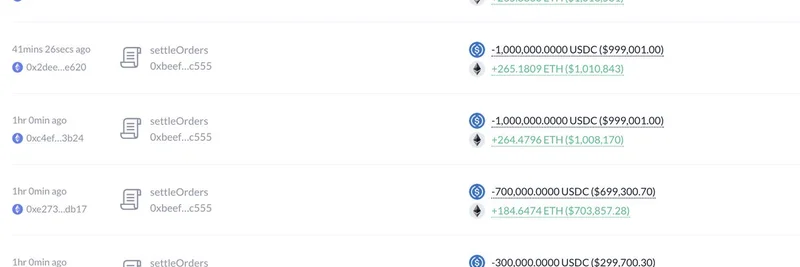In the wild world of crypto, where prices can swing like a pendulum on steroids, big players often signal the next move. Enter the "7 Siblings," a group of mysterious Ethereum wallets that have earned a reputation for buying ETH when everyone else is panicking. According to a recent tweet from on-chain sleuths at LookOnChain, these whales are at it again, dipping into the market amid a crash.
Who Are the '7 Siblings'?
The "7 Siblings" aren't actually related by blood—they're a cluster of seven Ethereum addresses that analysts believe belong to the same entity or coordinated group. Tracked by platforms like LookOnChain, they've been spotted accumulating massive amounts of ETH during previous downturns. Back in February 2025, they snapped up over 50,000 ETH worth around $126 million when prices bottomed out. Fast forward to August, and they even sold off some holdings for $88 million, but they still hold a staggering 1.21 million ETH, valued at billions.
These whales are like the cool-headed investors who buy stocks during a recession. Their moves often precede market recoveries, making them a barometer for smart money in crypto.
The Latest Move: Borrowing Big to Buy the Dip
In the tweet, LookOnChain highlights how the 7 Siblings borrowed 40 million USDC from Aave—a popular decentralized lending protocol—about four hours before posting. They then used 5 million of that USDC to buy 1,326 ETH at an average price of $3,771. That's no small change; it's a bold bet that ETH is undervalued and poised for a rebound.
USDC is a stablecoin pegged to the US dollar, often used in DeFi (decentralized finance) for lending and borrowing without the volatility of other cryptos. Aave allows users to borrow against collateral like ETH, but it comes with risks—if prices drop too far, positions can get liquidated. The 7 Siblings' health factor on Aave is holding steady, but this move shows confidence in ETH's resilience.
Why This Matters for Meme Coins
Now, you might be wondering: What does ETH whale activity have to do with meme tokens? A lot, actually. Many popular meme coins, like those inspired by dogs, cats, or internet jokes, are built on the Ethereum blockchain or its layer-2 solutions. When ETH prices dip, it often drags meme coins down with it due to reduced liquidity and investor sentiment.
But when whales like the 7 Siblings start buying ETH en masse, it can signal the bottom is in. This influx of capital boosts ETH's price, which in turn pumps gas fees and trading volumes—creating a fertile ground for meme coin rallies. Remember the 2024 crash? The 7 Siblings bought big on August 6, and sure enough, meme tokens like PEPE and SHIB saw massive rebounds shortly after.
For blockchain practitioners and meme enthusiasts, this is a reminder to watch on-chain data. Tools like DeBank (linked in the tweet) let you track these wallets in real-time. If ETH stabilizes around $3,700-$3,800, we could see a wave of new meme launches or revivals of old favorites.
Key Takeaways and Tips
- Spot the Signals: Follow accounts like LookOnChain for real-time whale alerts. Their insights can help you time entries into meme tokens.
- DeFi Strategies: Borrowing on Aave isn't for beginners—understand liquidation risks before leveraging up.
- Meme Coin Plays: Look for ETH-based memes with strong communities during dips. Historical patterns suggest recoveries can be swift and explosive.
- Stay Informed: The crypto market is interconnected. ETH movements often foreshadow trends in altcoins and memes.
Whether you're a seasoned trader or just dipping your toes into meme tokens, keeping an eye on these big players can give you an edge. Who knows? The next bull run might just start with a sibling reunion.


